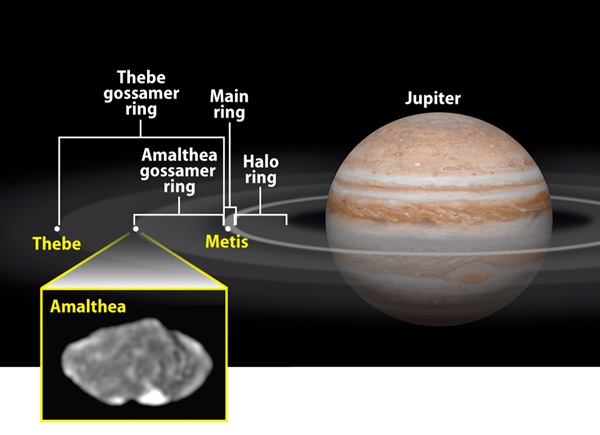Key Takeaways:
Amalthea isn’t really that faint, as celestial objects go. It glows around 13th magnitude. But it never gets farther from Jupiter than about 11/3 the planet’s diameter. So the planet’s glow can overwhelm it. You can solve this dilemma by moving Jupiter just outside your eyepiece’s field of view.
As to when to look, first head to http://tiny.cc/Ephemeris. Enter a “Start time” and “Stop time” in the format YYYY-MM-DD. Then set the “Interval.” I generally use one hour. Under “Column Selection,” click the second and 12th boxes. Under “Moon Columns,” click the second box, and “Amalthea (J5).” Then click “Generate table,” and click the link to download the table, which will display it.
Once you have the table, look under the column “Amalth” and find numbers close to 39 or –39. Those are the maximum distances in arcseconds that the moon lies either east (positive number) or west (negative number) of Jupiter. After you locate the 39s, check the dates and times (the table lists Universal Time). If it’s dark then and if Jupiter is above your horizon, you might have a chance to spot elusive Amalthea. Good luck!
Senior Editor










